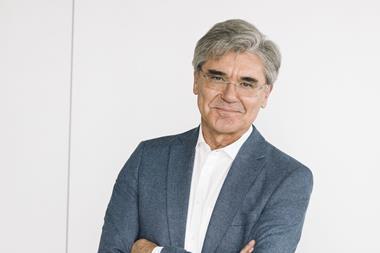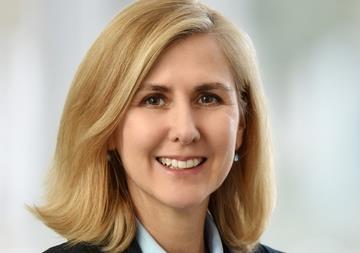Central and eastern Europe’s second-pillar pension funds recorded exceptional year-on-year growth in 2005, well ahead of the rise in numbers of clients, despite their relatively conservative investment strategies. There have also been relatively few changes in the rankings compared with 2004. There were no changes in the top 10 in either the Polish and Hungarian mandatory second-pillar pension fund system.
Asset growth was particularly strong in Poland, by far the largest of the pensions markets. By value assets were up 44% to €22.3bn while the number of clients fell by 1.6% to 11.7m. This seeming anomaly in a mandatory system is because some 800,000 so-called dead accounts of people who never existed or should never have been enrolled were finally removed. The effect of the high emigration rate since EU accession - estimates run as high as 2m - has not been discernible so far, although this may be because of Poland’s high unemployment rate, at 17% the EU’s worst.
The Polish pension fund industry had good returns in 2005. Commercial Union Pension Fund, the largest in the region, reported a return net of management fees of 15.5% in 2005. Chief investment officer and member of the management board Michal Szymanski attributes this to positive returns on the Polish equity market and local interest rates that, aligned with Poland’s loosening monetary policy, are falling. “Looking forward, that’s a challenge,” he notes. Polish interest rates are now at a historic low, and Szymanski is unsure whether they can fall further, especially given the continuing convergence of Poland with the Euro zone. “We will now have to look for other sources of return,” he predicts.
According to Szymanski, the main asset allocation trends in 2005 were that the fund increased investments in non-treasury fixed income paper, including corporate, mortgage and revenue bonds, although these are still relatively underdeveloped markets in the region. The key features of the Polish market compared with its CEE neighbours include the strict limits on foreign investment, at 5% the region’s lowest, and the relatively high investment in equity, an average 32% at the end of 2005. The equity bias has made Polish pension funds influential players on the Warsaw Stock Exchange.
A recent EBRD report, Regulatory Induced Herding? Evidence from Polish Pension Funds, shows that Polish pension funds have followed the same portfolio strategy rather than the best one. According to Szymanski, the two reasons for this phenomenon are the minimum benchmark that funds must achieve (currently over a three-year average) and detailed and timely publishing requirements of each fund’s asset structure. One solution, he adds, is that the currently strict limits on asset classes are widened to including new instruments such private equity and real estate. “The issue of diversification will become more important in 2007,” he adds.
However, the Hungarian market shows that asset managers are primarily interested in yield. Hungary’s second-pillar system, established in 1998, is the region’s oldest. Assets in 2005 grew in value by 39% in euro terms to €4.5bn, around 10% of total savings, compared with a nominal payment increase of 14% and a 4.4% membership rise to 2.5m. Hungarian pension fund managers maintain a highly conservative investment strategy, with two-thirds of the average portfolio invested in government bonds, but it proved remarkably effective in 2005. “We had 15% gross returns and 14% net returns,” reports Peter Heim, CEO of Aegon Hungary Fund Management Company and head of CEE investment in Budapest. “The strong performance was mainly driven by equity, bonds and asset allocation and we outperformed our 12% benchmark.” The fund focused on global equity markets in 2005, with a five percentage point increase in west European equities as well as pharmaceutical stocks such as Pliva, while slashing its Hungarian equity exposure, which according to Heim has plateaued as Hungarian economic growth slows.
Some 80% of the Aegon fund is invested in fixed income - a current risk-free return of 7.5% makes such a heavy weighting inevitable - but this is down on the 90% level in 2004 and Heim expects the bond weighting to fall to 75% next year and 70% in five years’ time.
“We are planning to invest in riskier assets and are looking at private equity investments and hedge funds, as well as a higher equity weighting,” he says. Hungarian pension funds can currently only invest 5% of assets in private equity, and Heim pleads for a more supportive environment here.
The main changes facing the Hungarian pensions industry are the introduction of caps on asset management fees, currently around 1% for the larger funds. These will be set at 0.9% in 2007 and 0.8% the following year. In 2008 there will be a more radical change as Hungarian pension fund companies will be able to offer their clients three funds with different risk profiles. This structure was the one adopted in Estonia when the market launched in 2002, and while it inevitably produces smaller individual funds, the overall investment profile is also radically less oriented towards fixed income.
The Estonian market is still in rapid growth stage. At the end of 2005 the total asset size of the second pillar market reached €230m, up 87% on the year with 426,000 out of a population of 1.4m; by this autumn it will top 500,000. “While the rapid asset growth is partly due to the low baseline of a relatively young system, a high rise in wages has also contributed,” notes Robert Kitt, fund manager of Hansa Pension Funds in Tallinn. Hansa had 52% of the second pillar market by assets at end-2005, and 60% of its clients invested in its K3 progressive fund, with a high equity weighting, irrespective of their age. The fund returned 17.2% in 2005, with much of that attributed to a relatively high 10% weighting in Russia and eastern European securities.
“Russia is a good place for portfolio diversification,” explains Kitt. “Internally it has a good fiscal stance, the country is becoming richer and the consumer market remains to be discovered.”
Kitt adds that Estonian funds have been generally aggressive in investing in non-core markets, but believes that for the coming period they will decrease their risk level and move more into western European markets.
Slovakia’s second pillar system, which started in January 2005, also adopted the multi-fund approach. At end-2005 the funds had assets under management of SKr9bn (€239m) and 1.1m members, and by mid-August the total fund size had grown to SKr19.3bn. The rapid growth is due to the narrow time window for those joining voluntarily. Each pension fund management company has to offer three funds: a conservative one invested in fixed income, a growth fund that can invest up to 80% in shares, and a balanced one with an intermediate risk profile, but even the growth funds are currently risk-averse.
“Fund managers have been offering conservative strategies with all three funds because they wanted steady growth,” notes Dusan Doliak, chief operating officer at Winterthur’s market unit. Some consolidation has already occurred; in 2005 ING acquired the Sympatia-Pohoda fund and Allianz-Slovenska bought Prva dochodkova sporitelna, bringing the number of pension fund management companies down to six. Slovakia’s third-pillar, which started in 1996 and is largely funded by company schemes, had total assets of SKr18bn and 687,117 clients at end-2005.
It has suffered from competition as a result of government liberalisation, notes Doliak, giving equal tax treatment to products from banks, investment companies and insurers. “We have seen people stopping payments to the third pillar and a pattern of non-paying clients and employers,” he reports. The pensions industry is now lobbying parliament for a change to the current regime.
The Czech Republic only has a third pillar system. At end-2005 membership was up by 11% to 3.3m and assets up 27% to €3.4bn. The investment profile remained highly conservative, with 80% in bonds, 8.2% in cash and bank deposits, and 7.5% in shares. This is largely the result of legislation requiring funds to return positive results each year. The equity portion increased marginally, from 5.7% the year before. Despite these conservative allocations, returns have been good, largely due to growth in the capital markets, says Jiri Rusnok, executive adviser to the management committee of ING’s Czech and Slovak pensions and president of the Association of Czech Pension Funds.
“The asset management strategy of our fund, similar to others on the Czech market, is quite conservative because high returns guaranties on a yearly basis are stipulated by the particular law,” says Rusnok. “So by definition it is very important to manage asset allocation and to utilise the highest possible yields of the bond part of the portfolio. Total net investment gains from the portfolio rose to CZK355m (€12.7m) in 2005 from CZK148m in 2004. Last year we also managed our costs very well; total costs rose by 3.5%. So our net profit increased to CZK578m from CZK270m and we could distribute to our client a profit-sharing 4.1% on average.”
Switching between funds also became a feature as the markets became more volatile and agents earned commission from persuading fund participants to move. Currently, there is no exit fee. “We would like to introduce some kind of hurdle,” says Doliak.
In the Slovak second pillar initial legislation allowed client to change their fund once a year, as a result of which around 12% of clients had switched by July. The following month the law was changed to allow a change every two years.
“The CEE markets will probably slow down as we can already observe this year,” predicts Rusnok. “At the same time the low interest rates will persist after the small increases in coming moths since the conversion strategy for new EU member states will continue. So it will be even more difficult to find appropriate yields for our growing portfolio. We would like to diversify our portfolio more. We may consider some investments into real estate funds and will definitely expand our foreign exposure.”
Heim in Hungary adds that the 2005 strong performance will not be repeated in 2006. “With interest rates rising and the markets preparing for a global slowdown, this year is not a good year for investment,” he says. He remains much more optimistic for 2007, less so for Hungarian securities because of continuing austerity measures and lack of corporate growth, but he is positive for the global market, particularly if the US economy experiences a soft landing. “It could be a great year for global equities, and for Hungarian bonds,” he predicts.












No comments yet